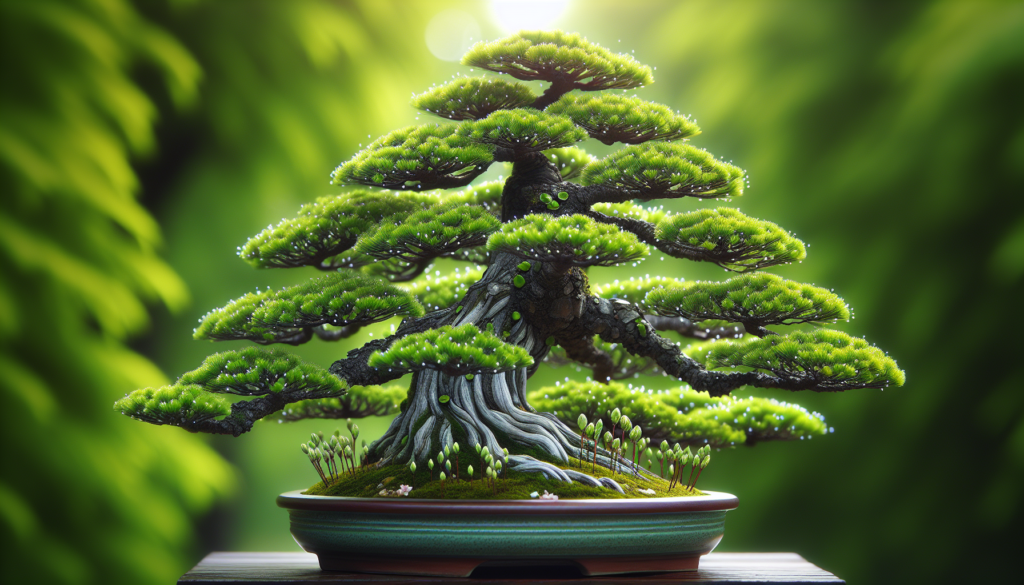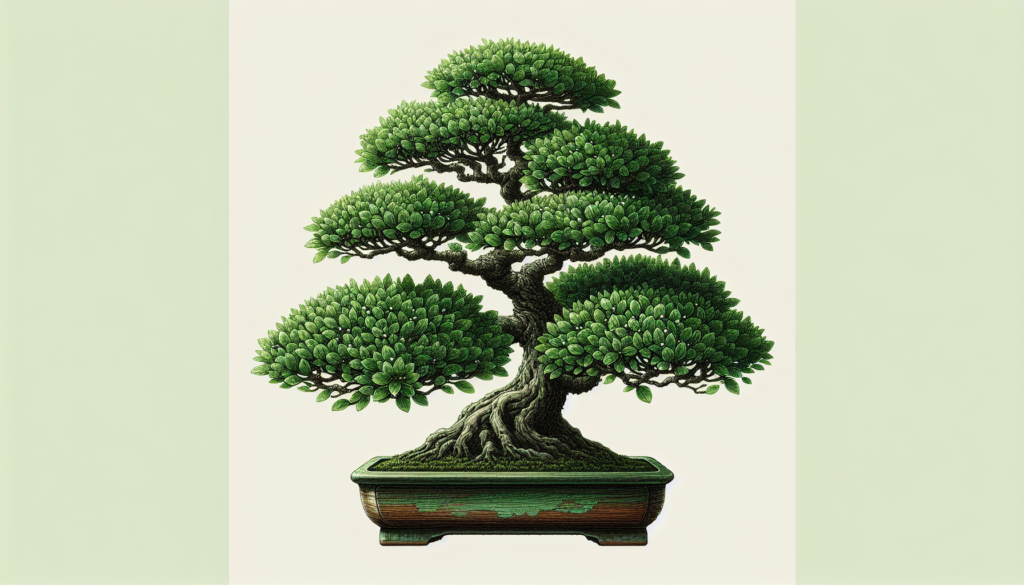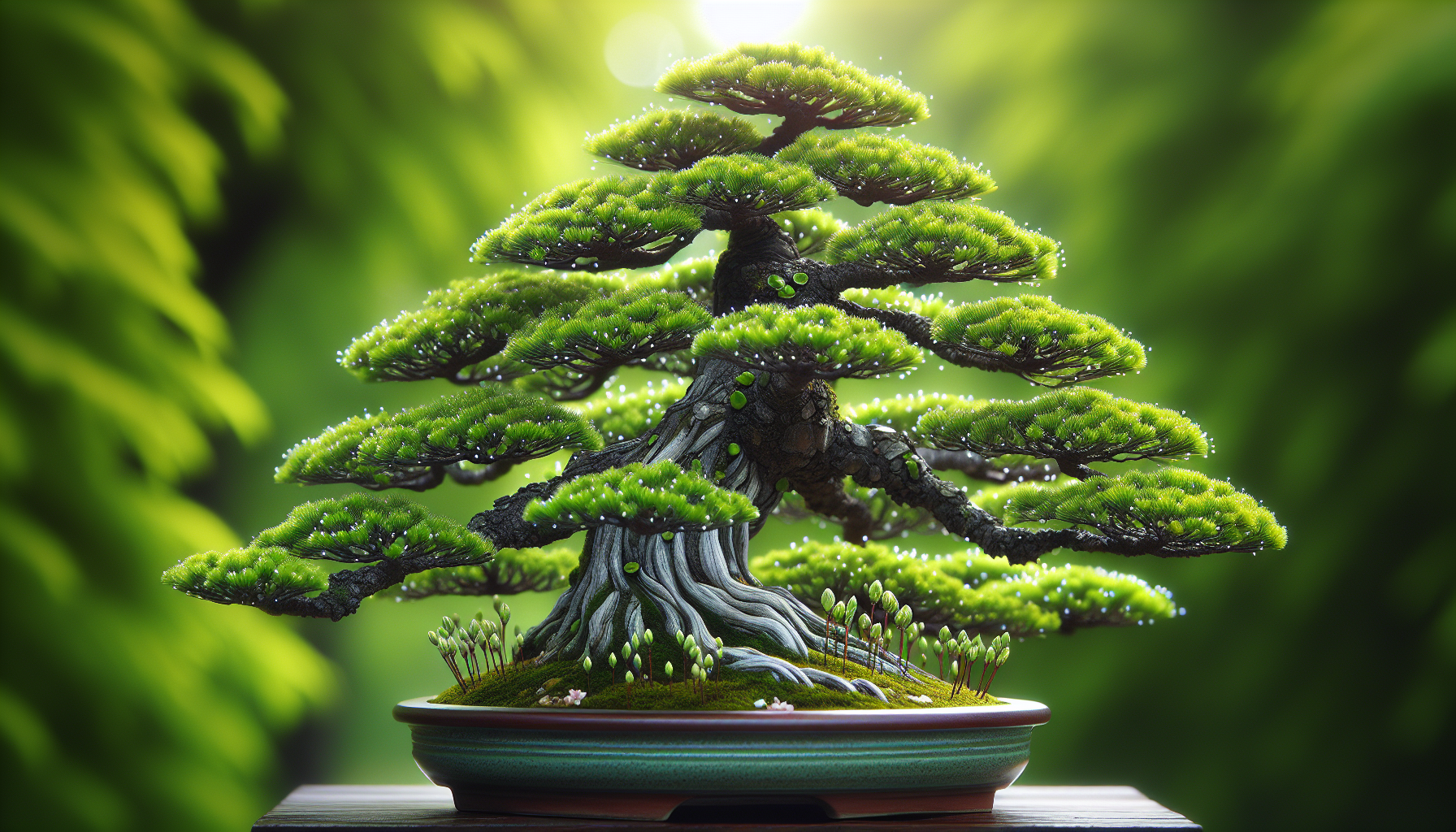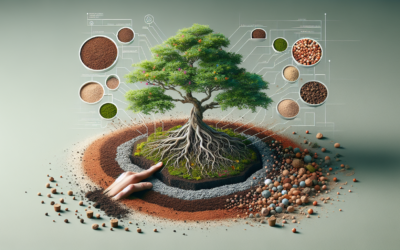In the world of bonsai, ensuring the health and vitality of these delicate miniature trees is of utmost importance. However, pests and diseases can wreak havoc and cause irreversible damage. That’s why it’s crucial to take preventive measures to safeguard your bonsai’s wellbeing. This article will provide you with valuable insights on how to identify and prevent pests and diseases, as well as effective treatment options, allowing you to nurture your bonsai and keep it flourishing for years to come.

Understanding Bonsai Pests and Diseases
Defining Bonsai pests
When it comes to bonsai plants, pests are unwelcome visitors that can wreak havoc on their health and beauty. Bonsai pests can include a variety of insects, such as aphids, scales, spider mites, and mealybugs. These tiny critters feed on the sap of the bonsai, weakening its overall health and compromising its aesthetic appeal.
Identifying common bonsai diseases
In addition to pests, bonsai plants are susceptible to various diseases. These can include fungal infections, bacterial infections, and viral diseases. Fungal infections often appear as discolored or wilting leaves, while bacterial infections may cause lesions or rot. Viral diseases can manifest as stunted growth or leaf distortion. Identifying these diseases early on is crucial for their effective management.
How pests and diseases affect bonsai plants
Pests and diseases can have detrimental effects on bonsai plants. They can weaken the plant’s immune system and hinder its growth and development. Pests feed on the sap, depriving the bonsai of vital nutrients and causing leaf drop, stunted growth, or even death. Diseases, on the other hand, can spread rapidly and lead to irreversible damage if not addressed promptly. Understanding how pests and diseases affect bonsai plants is important in order to implement appropriate preventive measures.
Proper Care of Bonsai to Prevent Pests and Diseases
Importance of regular watering
One of the key aspects of bonsai care is providing adequate and regular watering. Proper watering helps maintain the bonsai’s health and resilience, making it less susceptible to pests and diseases. Under-watering can lead to stress and weaken the bonsai, making it an easy target for pests. On the other hand, over-watering can create damp conditions that are favorable for the growth of fungi and bacteria. Achieving the right balance in watering is essential for the overall well-being of the bonsai.
Appropriate feeding for bonsai
Feeding your bonsai with the right nutrients is crucial for its growth and resilience against pests and diseases. Using high-quality bonsai fertilizers that provide essential nutrients in the correct proportions helps maintain a strong and healthy bonsai. A well-nourished bonsai is better equipped to ward off pests and diseases and recover quickly if infestation or disease occurs.
The role of repotting in pest control
Repotting is an important process in bonsai care that contributes to pest control. By repotting your bonsai regularly, you not only refresh its potting soil but also inspect the root system for any signs of pests or diseases. During repotting, you can remove any pests or diseased roots and replace the soil with fresh, well-draining substrate. This proactive approach helps prevent the spread of pests or diseases and maintains the optimum health of the bonsai.
Pruning techniques for disease prevention
Pruning is not only essential for shaping and styling bonsai plants but also plays a significant role in disease prevention. Regular pruning helps improve airflow and sunlight penetration, reducing favorable conditions for fungal growth. It also allows you to remove any infected or damaged branches, preventing the spread of diseases. Proper pruning techniques, such as sterilizing tools between cuts, further reduce the risk of introducing infections to the bonsai.
Signs and Symptoms of Bonsai Pests and Diseases
Recognizing symptoms of pest infestation
Being able to recognize the signs of pest infestation is crucial in addressing the issue promptly and effectively. Look out for symptoms such as discolored or distorted leaves, presence of webbing or sticky residue, tiny crawling insects, or a general decline in the health of the bonsai. Regularly inspecting your bonsai and being vigilant about any changes in its appearance will help you detect pest infestations before they cause extensive damage.
Visible signs of disease in bonsai
Diseases in bonsai often present themselves through visible signs. These can include discoloration, wilting, or abnormal growth patterns in leaves, branches, or the trunk. You may notice lesions, spots, or fungal growth on the surface of the bonsai. It is important to document and identify these visible signs accurately, as it will help determine the appropriate treatment and prevent further spread of the disease to other bonsai.
Progression of pests and diseases in bonsai
Understanding the progression of pests and diseases in bonsai is essential for effective management. Both pests and diseases can spread rapidly and cause irreversible damage if left untreated. Pests, if not controlled, can multiply rapidly and infest the entire bonsai, leading to the collapse of its health. Similarly, diseases can quickly spread from one bonsai to another through contaminated tools or improper handling. Recognizing the potential for progression and taking immediate action is key to saving your bonsai.
Common Bonsai Pests and their Management
Identifying common bonsai pests
To effectively manage pests, it is crucial to identify the common culprits that target bonsai plants. Aphids are small, soft-bodied insects that suck sap from leaves and stems. Scales appear as small, round or oval-shaped bumps on the bonsai and also feed on sap. Spider mites are tiny pests that form webs and cause damage by piercing leaves and draining their sap. Mealybugs are small, white, cottony insects that also feed on sap. Identifying these pests accurately helps in implementing appropriate pest control measures.
Preventive pest control methods
Prevention is always better than cure when it comes to managing pests in bonsai. Implementing preventive measures such as regular inspection, maintaining cleanliness, and promoting a healthy growing environment can go a long way in reducing the risk of pest infestations. Additionally, using insecticidal soaps or oils, introducing natural predators, or employing physical barriers can help deter pests and minimize their impact on bonsai plants.
Treatment options for pest-infested bonsai
If your bonsai is already infested with pests, there are several treatment options available. Insecticides specifically formulated for bonsai can be effective in controlling pests. It is important to choose bonsai-safe products and carefully follow the instructions for application. Alternatively, pruning and removing heavily infested parts, using natural remedies such as neem oil or garlic solutions, or even introducing beneficial insects can help manage the pest population and restore the health of your bonsai.

Common Bonsai Diseases and their Management
Common diseases affecting bonsai
Bonsai plants can fall victim to various diseases, including fungal infections like powdery mildew, rust, or root rot. Bacterial infections can manifest as canker, galls, or leaf spots. Viral diseases may cause mosaic patterns or deformities in leaves. Identifying the specific disease affecting your bonsai is crucial for implementing targeted treatment measures.
Disease prevention strategies
Preventing diseases in bonsai involves implementing a combination of proactive measures. Good cultural practices, such as providing proper light and airflow, avoiding over-watering, and maintaining a balanced nutrient regime, are essential in preventing the onset of diseases. Situating bonsai in appropriate locations, ensuring proper drainage, and inspecting newly acquired plants for any signs of diseases before introducing them to your collection are additional preventive strategies that can minimize the risk of disease outbreaks.
Available treatment options for diseased bonsai
If your bonsai has already succumbed to a disease, prompt action is necessary to prevent further spread and salvage the plant. Depending on the specific disease, treatment options may include removing infected parts, applying appropriate fungicides or bactericides, or adjusting cultural practices to create an unfavorable environment for the disease-causing pathogens. It is important to gather accurate information and seek guidance from experienced bonsai enthusiasts or professionals to ensure the most effective treatment.
Effective Use of Pesticides
Choosing bonsai-safe pesticides
When using pesticides in bonsai care, it is crucial to choose products that are safe for the bonsai, its environment, and the applicator. Look for pesticides specifically labeled for use on bonsai plants and follow the instructions carefully. Organic or botanical-based insecticides can be a safer choice, but it is important to consider their effectiveness against the target pests and compatibility with the bonsai plant.
Proper application of pesticides
To ensure the effective control of pests, it is essential to apply pesticides correctly. This includes timing the application according to the pest’s life cycle, using the recommended dosage, and ensuring thorough coverage of the affected areas. Avoid applying pesticides on sunny or windy days, as it can lead to product wastage or damage to the bonsai. Always wear appropriate protective gear when handling and applying pesticides to keep yourself safe.
Potential risks of pesticide use on bonsai
While pesticides can be effective in controlling pests, it is important to be aware of the potential risks associated with their use. Chemical pesticides, if overused or misapplied, can harm not only the pests but also beneficial insects, other plants, and the environment. They can also leave residues on the bonsai, affecting its health and aesthetics. Careful consideration of the risks and the necessity of pesticide use is essential in order to make informed decisions in bonsai care.
Natural Pest Control Methods
Advantages of natural pest control
Using natural pest control methods offers several advantages in bonsai care. Natural methods minimize the use of chemicals, reducing potential harm to the bonsai and the environment. They also promote biodiversity, as they do not harm beneficial insects that play a crucial role in pest management. Additionally, natural pest control is sustainable and cost-effective, as many remedies can be easily prepared at home using common household ingredients.
Common natural pest repellents suitable for bonsai
Several natural ingredients can act as effective pest repellents for bonsai plants. Neem oil, derived from the neem tree, has insecticidal properties and is effective against a wide range of pests. Garlic oil, onion extract, and chili pepper solutions can also be used as natural repellents. Other options include using beneficial nematodes or introducing ladybugs and lacewings, which feed on common bonsai pests.
Homemade solutions for pest control
Homemade solutions can be an economical and environmentally friendly way to manage pests in bonsai plants. Simple ingredients such as vinegar, dish soap, vegetable oil, or baking soda can be combined in various combinations to create effective pest control solutions. These homemade remedies can be sprayed on the bonsai to repel pests, disrupt their life cycle, or control fungal infections. It is important to test these solutions on a small portion of the bonsai first to ensure they do not cause any adverse effects.
Using Beneficial Insects for Pest Control
Role of beneficial insects in pest management
Beneficial insects play a crucial role in maintaining the balance of pests in bonsai plants. Ladybugs, lacewings, and predatory mites are examples of beneficial insects that feed on pests like aphids, scales, and spider mites. These natural predators can help keep pest populations in check and reduce the need for chemical interventions. By attracting and encouraging beneficial insects in your bonsai environment, you can establish a natural pest control system.
Common beneficial insects for bonsai
Ladybugs, also known as lady beetles, are perhaps the most well-known beneficial insects. They feed on aphids, mealybugs, and scale insects, among others. Lacewings, with their delicate appearance, are voracious predators of aphids and other soft-bodied pests. Predatory mites are tiny mites that feed on spider mites, effectively controlling their population. Attracting and releasing these beneficial insects in your bonsai can significantly help manage pest infestations.
Attracting beneficial insects to your bonsai
Creating a favorable environment to attract beneficial insects is an effective method for pest control in bonsai. Planting companion plants that provide nectar, such as marigold or daisies, can attract beneficial insects. Providing sources of water, like shallow dishes or saucers with pebbles for them to drink from, is also important. Reducing the use of chemical pesticides and creating a diverse, healthy ecosystem around your bonsai will attract beneficial insects naturally and aid in pest management.
Cleanliness and Hygiene in Bonsai Care
Importance of cleanliness in preventing pests and diseases
Maintaining cleanliness and hygiene in bonsai care is crucial for preventing the spread of pests and diseases. Regularly cleaning the bonsai’s foliage, removing fallen leaves, and ensuring the potting area is free from debris can help minimize the chances of pests finding a breeding ground. Additionally, keeping tools and equipment clean and sterilized before and after each use helps prevent the introduction and spread of pathogens.
Cleaning techniques for bonsai and its environment
Cleaning your bonsai involves more than just removing visible dirt and debris. Gently wiping the leaves with a soft cloth or using a soft brush helps remove dust and potential habitats for pests. Trimming and pruning the bonsai also aid in maintaining cleanliness as they remove dead or diseased parts. Cleaning the potting area and the surrounding environment, such as benches or tables, further ensures a clean and healthy growing space for your bonsai.
Proper disposal of infested or diseased bonsai
In situations where a bonsai has been heavily infested with pests or severely affected by disease, it may be necessary to consider proper disposal. Isolation of the affected bonsai and avoiding contact with other healthy bonsai is crucial to prevent the spread of pests or diseases. Consultation with local experts or professionals in bonsai care can provide guidance on the best methods of disposing of infested or diseased bonsai while minimizing the risk to other plants.
Role of Bonsai Community in Pest and Disease Prevention
Sharing experiences and knowledge
The bonsai community plays a significant role in pest and disease prevention through the exchange of experiences and knowledge. By sharing their experiences with pest infestations or diseases and the corresponding treatment methods, bonsai enthusiasts contribute to collective learning. This sharing of information helps others recognize and tackle similar issues in their own bonsai plants, promoting proactive pest and disease prevention.
Collaboration in managing bonsai pests and diseases
Collaboration within the bonsai community fosters a collective approach to managing pests and diseases. Sharing best practices, identifying effective treatment methods, and collectively addressing common challenges helps overcome individual limitations. Collaboration can take the form of local bonsai clubs or societies organizing workshops, study groups, or online forums where enthusiasts can share ideas and support each other in managing pests and diseases effectively.
Role of bonsai clubs and societies in pest control
Bonsai clubs and societies play an important role in pest control by providing a platform for bonsai enthusiasts to connect and learn from each other. These organizations often organize workshops, demonstrations, or lectures on various aspects of bonsai care, including pest and disease management. By fostering an environment of learning, collaboration, and support, bonsai clubs and societies contribute to the well-being and protection of bonsai plants against pests and diseases.
Preventing Pests and Diseases in Bonsai requires a comprehensive understanding of the common issues faced in bonsai care. By implementing proper care practices, recognizing the signs of pests and diseases, and adopting effective management strategies, you can ensure the health and longevity of your cherished bonsai collection. Remember, when it comes to pests and diseases in bonsai, prevention and early intervention are key to maintaining the beauty and vitality of these miniature living works of art.








